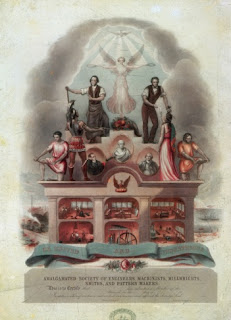Americans
have always had conflicted and varied thoughts on labor unions and their
utility in the work force. Some people associate the term with mob affiliations
and famous gangsters, but mostly people just envision a group of people
fighting for fair pay, decent work conditions, and good benefits from
employers. Legally, a labor union is the representation of United States
workers in various industries. These representatives have the interest of the
employee, and group of employees at heart. Labor unions have played a hugely important role in the
American workforce for centuries and continue to advance labor laws in modern
days.
When Labor Unions Were Established and Why
In the
Revolutionary era, temporary formations of unionized workers generated the
ideas which would eventually lead into the formation of permanent unions. Initially,
labor unions were formed for many of the same reasons they still exist today –
workers wanted protection for their physical safety in the workplace, and
wanted to be compensated fairly for the time they worked for the company. The
movement really caught wind in the post-civil war era where many national labor
organizations began, and many also met failure.
Up until the
1900s, national unions were the only workers’ advocates until around the 20’s
when local unions started rallying for workers’ rights – this is also when the
now common act of striking began to catch on. In the 1930s, an act called the
Wagner Act became the first act to protect the rights of unions to organize. About
a decade later, an oppositional act called the Taft-Hartley Act began the start
of a weaker era for unions; negative attention caused by corruption and mob
affiliation caused many companies and workers alike to distance themselves from
organized labor unions from the 50s moving forward.
Modern Labor Unions
Today, labor
unions are mostly about negotiating for better wages, healthcare benefits, sick
pay, overtime pay, and working conditions. The main role of a modernized union
is to ensure that labor laws already in place are being upheld by employers. If
it is found that an employer is violating laws and guidelines in place for the
treatment of their employees, a union representative will go up against the
company on behalf of the employees. Unions which operate on a larger scale
typically spend the most time rallying for better labor laws and lobby at the
state & federal levels.
Recent lack
of compliance and opposition from private companies has reduced the amount of
unionized workers. An estimated 11.4% of United States workers belong to a
union in the modern workforce - this is quite a bit less than other countries
with similar industries; that number is even less in the private sector with
only 7% of private sector employees belonging to a labor union. Most modern
unions are based in the Northeast, Midwest, and the state of California with a
large amount of workers being predominantly older males. Union workers also get
the benefit of making up to 30% more annually than their non-unionized
counterparts. Although employers are growing increasingly more oppositional to
unions, the workers protected under unionization are going to continue to fight
to keep this aging concept working for them. The United States Department of
Labor has initiated many laws which protect the rights of workers, and
because of this many see unions as a pre-dated concept.


0 comments:
Post a Comment